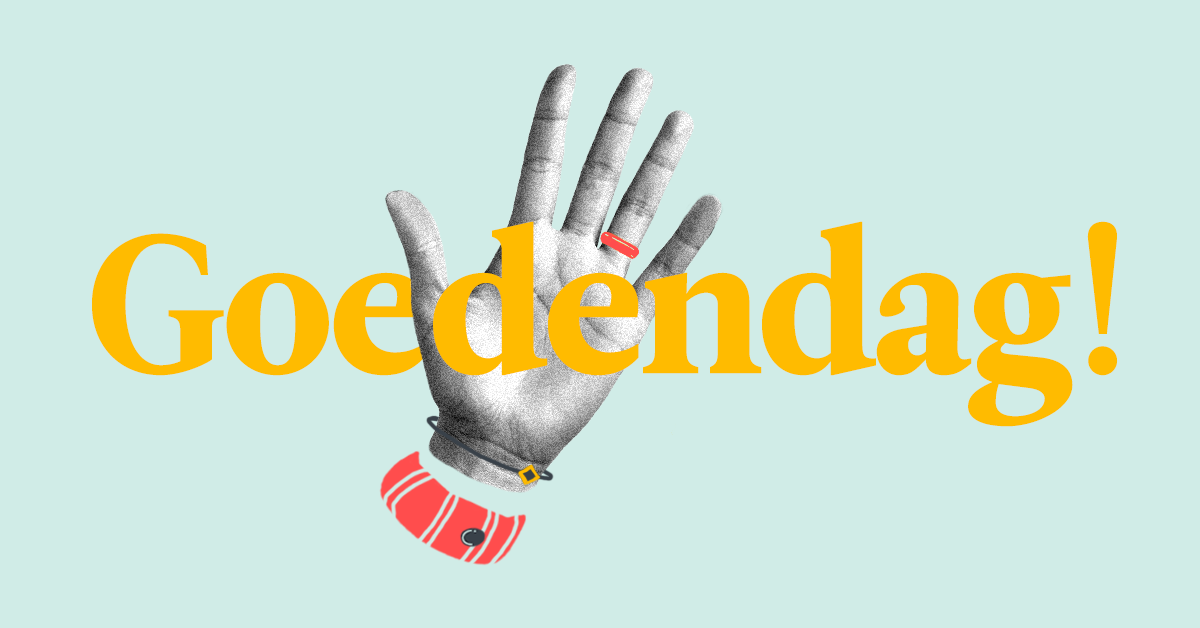Learning a new language can be an incredibly rewarding experience, opening doors to new cultures, friendships, and adventures. If you’re starting your journey with Dutch, it’s essential to familiarize yourself with some fundamental phrases. This article will explore Hi in Dutch and introduce you to ten must-know phrases that will make your conversations more engaging and meaningful. Whether you’re planning a trip to the Netherlands, moving there for work or study, or simply want to connect with Dutch speakers in your community, these phrases will serve as your stepping stones to fluency and effective communication.
What Does Hi in Dutch Mean?
When you say Hi in Dutch, you are essentially greeting someone in the Dutch language. The standard way to greet someone in Dutch is Hallo. This casual greeting is versatile and suitable for both formal and informal situations. It is akin to the English Hi or Hello and can be used in various contexts. However, knowing how to greet people is just the beginning of your language-learning journey. To navigate conversations successfully and feel more at ease in social interactions, you’ll need to learn a few more essential phrases that can help you express yourself better and understand others more effectively.
Hi in Dutch: Essential Greetings
Apart from the simple yet effective Hallo, there are various ways to greet someone in Dutch, depending on the time of day or the formality of the situation. For instance, during the morning, you would say Goedemorgen, which means Good morning. In the afternoon, the appropriate greeting is Goedemiddag, or Good afternoon. As the day winds down into evening, you can use Goedenavond, translating to Good evening. Knowing these different greetings and when to use them can significantly enhance your conversational skills, as it demonstrates not only your understanding of the language but also your respect for the Dutch culture and social customs. Adapting your greetings based on the time of day shows attentiveness and can lead to more meaningful interactions.
How to Ask How Are You? in Dutch
One of the most common questions in any language is How are you? This question serves as a polite inquiry that opens the door to friendly conversation. In Dutch, you would ask, Hoe gaat het? This phrase is straightforward yet effective, allowing you to engage with others on a personal level. It’s often accompanied by a smile and makes the conversation feel warm and welcoming. When someone asks you this question, you can respond with Goed, dank je! which means Good, thank you! This simple exchange can pave the way for deeper conversations, allowing you to connect with others and learn more about their experiences. Mastering this phrase is vital for establishing rapport with Dutch speakers.
Introducing Yourself: Hi in Dutch Style
When meeting someone for the first time, it’s essential to know how to introduce yourself. In Dutch, you can say Ik ben [Your Name], which translates to I am [Your Name]. This straightforward introduction allows you to make a personal connection right from the start. Adding a personal touch, such as sharing a little about where you’re from or why you’re in the Netherlands, can help break the ice and make conversations more engaging. For instance, you might say, Ik ben Sarah, en ik kom uit Canada (I am Sarah, and I come from Canada). This not only introduces you but also provides context that can lead to further discussion. Personal introductions are a fantastic way to build relationships and show interest in the people you meet.
Saying Please and Thank You
Politeness goes a long way in any language, and Dutch is no exception. Using phrases like Please and Thank you can significantly enhance your interactions. In Dutch, Please is expressed as Alstublieft (formal) or Alsjeblieft (informal). Knowing when to use each version is crucial, especially in formal settings like restaurants or businesses. Similarly, Thank you can be said as Dank je (informal) or Dank u (formal). Using these phrases not only makes you sound more fluent but also reflects your appreciation for the efforts of others. When you incorporate these words into your vocabulary, you show respect and consideration, which can leave a lasting positive impression on those you interact with.
Asking for Help: Can You Help Me? in Dutch
If you find yourself in a situation where you need assistance, knowing how to ask for help is vital. You can use the phrase Kunt u me helpen? for a more formal context, or Kun je me helpen? in informal situations. This phrase is essential for navigating unfamiliar places, whether you’re lost in a city, need help with directions, or require assistance in a store. For example, if you’re at a train station and need to know how to buy a ticket, asking for help with these phrases will not only get you the information you need but also demonstrate your willingness to communicate in Dutch. People generally appreciate when someone attempts to speak their language, and they will be more inclined to assist you.
Ordering Food: Hi in Dutch at a Restaurant
When dining out in the Netherlands, knowing how to order food can greatly enhance your culinary experience. You can start your order by saying, Ik wil graag [Dish Name] bestellen, which means I would like to order [Dish Name]. This phrase clearly communicates your request to the waiter or waitress and shows that you’re making an effort to engage in Dutch. Additionally, don’t forget to say Eten for Food and Drinken for Drinks. Familiarizing yourself with the local menu items can also enrich your experience, allowing you to explore traditional Dutch cuisine more confidently. By using these phrases, you’ll not only improve your language skills but also enjoy your meals more thoroughly, knowing you can communicate effectively.
Asking for Directions: Where Is…? in Dutch
If you’re exploring a new city, knowing how to ask for directions is crucial. You can use the phrase Waar is…? which translates to Where is…? This question can be followed by the specific place you are looking for. For example, you might ask, Waar is het station? meaning Where is the station? This phrase is invaluable during your travels and can help you navigate through unfamiliar streets and locations. Whether you’re looking for a museum, a café, or your hotel, being able to ask for directions in Dutch not only aids in your navigation but also encourages interaction with locals. Most Dutch people are friendly and willing to help, so don’t hesitate to approach someone for assistance.
Expressing Your Feelings: I Like in Dutch
Knowing how to express your feelings can help you connect with others on a deeper level. In Dutch, you can say Ik hou van… which means I like… This can be followed by whatever you enjoy, such as Ik hou van muziek (I like music) or Ik hou van fietsen (I like cycling). By using this phrase, you can share your interests and engage in conversations about common hobbies, preferences, and passions. This exchange can lead to finding common ground with Dutch speakers and can significantly enrich your interactions. Sharing your likes not only makes conversations more interesting but also fosters connections with others who have similar interests.
Saying Goodbye: Hi in Dutch Farewell Phrases
When it’s time to part ways, it’s essential to know how to say goodbye appropriately. You can use Tot ziens, which means See you later. This phrase is suitable for both formal and informal situations. Alternatively, Doei is a casual way to say goodbye among friends. Knowing how to say goodbye properly can leave a positive impression as you conclude your conversations. In Dutch culture, farewells can be just as meaningful as greetings, so take the time to express your goodbyes genuinely. A friendly farewell can set the tone for future interactions and reinforce the relationships you’ve built during your time in the Netherlands.
Conclusion
Mastering basic phrases is crucial for anyone learning Dutch, and the phrases discussed in this article, particularly Hi in Dutch, will help you navigate conversations with ease and confidence. By practicing these essential phrases regularly, you will not only improve your language skills but also enrich your cultural experiences. Each phrase you learn is a stepping stone towards greater fluency and a deeper understanding of the language. Remember, every conversation is an opportunity to connect with others, so don’t hesitate to start speaking! Embrace the journey of language learning, and enjoy the many adventures that come with it.
FAQs
Q1. What are some essential phrases for beginners learning Dutch?**
Some essential phrases include “Hallo” (Hello), “Dank je wel” (Thank you), “Alsjeblieft” (Please), “Hoe gaat het?” (How are you?), and “Tot ziens” (Goodbye).
Q2. How can I improve my Dutch pronunciation?**
Listening to native speakers through podcasts, videos, or language apps can help. Practicing with language partners and repeating phrases aloud also improves pronunciation.
Q3. Is it necessary to learn greetings when visiting the Netherlands?**
While many Dutch people speak English, learning greetings shows respect for the culture and can enhance your interactions with locals.
Q4. Are there any online resources for learning Dutch phrases?**
Yes, there are many resources available, including language learning apps like Duolingo, websites like Babbel, and YouTube channels focused on Dutch language instruction.
Q5. How can I practice using these phrases in real-life situations?**
Try using the phrases with Dutch speakers, join language exchange meetups, or participate in online forums and communities where you can practice conversational Dutch.
Also read: Things to Do in Eindhoven: Top 10 Must-Do Attractions in the City





